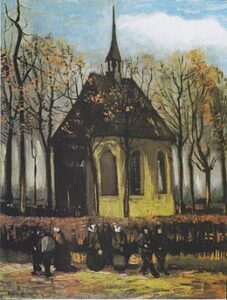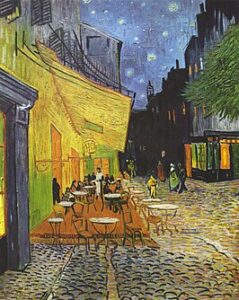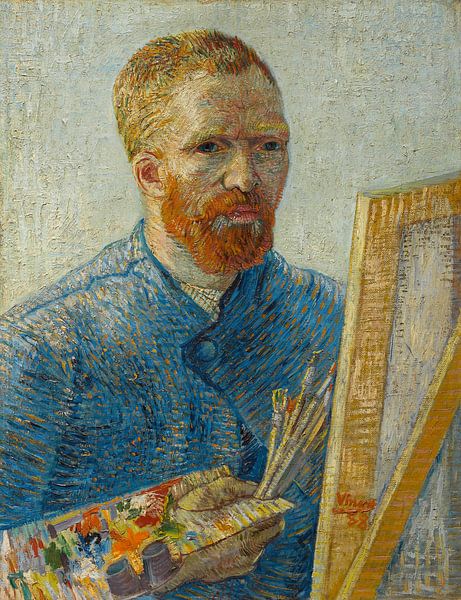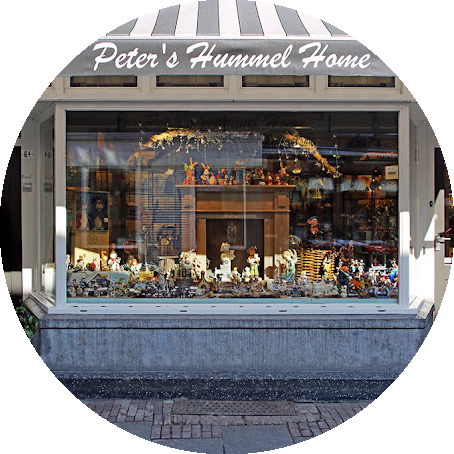Vincent van Gogh (Zundert March 30, 1853 – Auvers-sur-Oise July 30, 1890)
Vincent van Gogh was a Dutch painter and is considered one of the greatest painters of the 19th century. Recognition came late, however, only after his death did his works become noticed by the general public and world famous. His work falls under Post-Impressionism, an art movement that succeeded 19th century Impressionism.
Vincent was born in Zundert, Brabant, the son of a minister. Vincent began his career as a clerk in his uncle’s art shop and later aspired to become a preacher. In 1878, as a trial period, he worked for a time as a lay preacher in the province of Hainaut in Belgium. Although this period made a deep impression on him because of the poverty and renunciation of the heavy work of the miners, he was rejected as a lay preacher. During this period, however, he felt an artist’s calling. As a self-taught artist, he learned to draw using textbooks on perspective and anatomy. In the 10 years that followed, he lived and worked in Belgium, the Netherlands and France, developing his own style.
Thanks to the close relationship with his brother Theo who supported him financially and continuous correspondence with him, much is known about his life. Van Gogh’s use of color evolved throughout his career. In his early works, he often used dark, earthy tones, but as his style developed, he embraced vibrant colors. He also felt that music was an art form that could offer the most comfort to man, and with his paintings he wanted to pursue the same.
‘And in a painting I would like to say something comforting like music.’
Vincent van Gogh to his brother Theo, Arles, Sept. 3, 1888
Van Gogh’s oeuvre includes more than 2,100 works of art, including about 860 oil paintings.
Goebel’s Artis Orbis collection includes beautiful renderings of Van Gogh in porcelain and glass.


11884/5 Hervormd Kerkje Nuenen 1888 Cafe terras Arles
Van Gogh Museum Amsterdam Museum Kroller-Muller Otterlo



